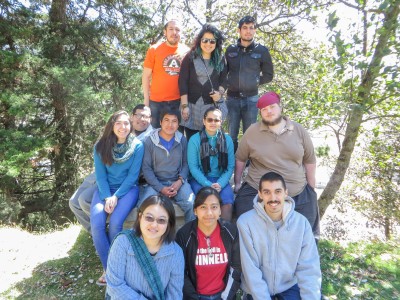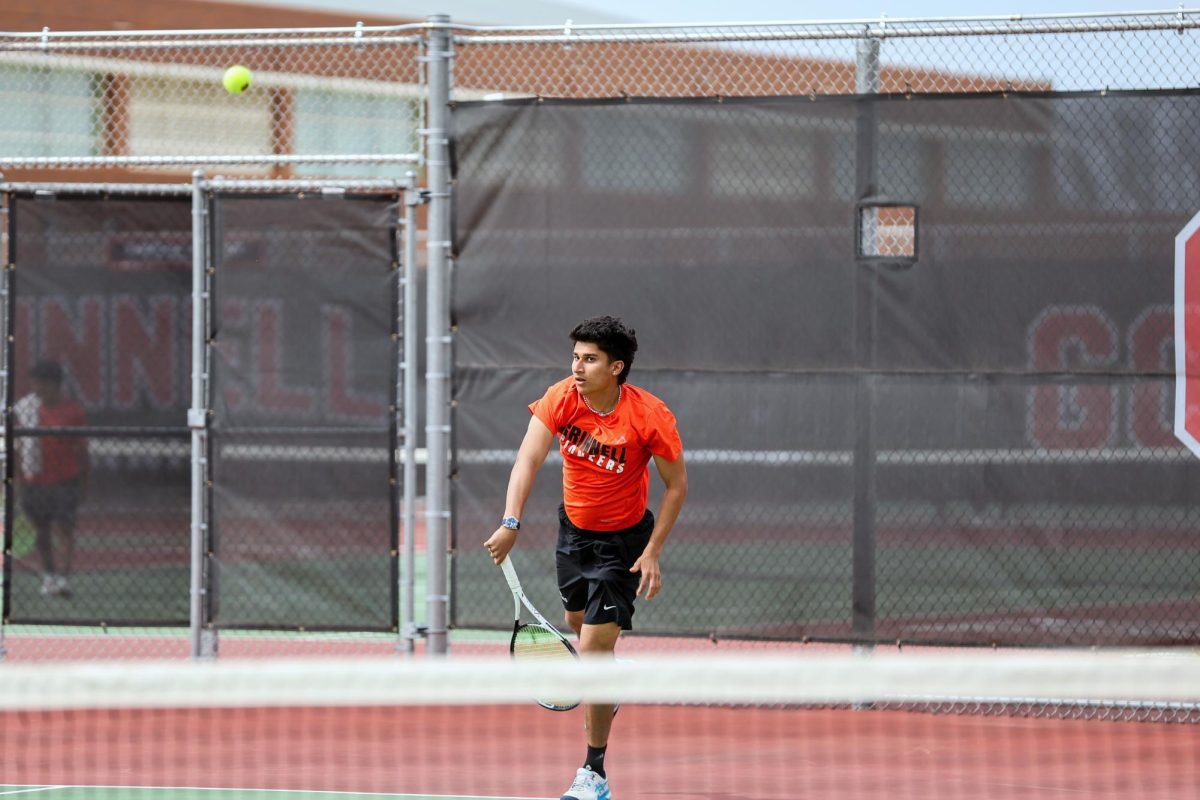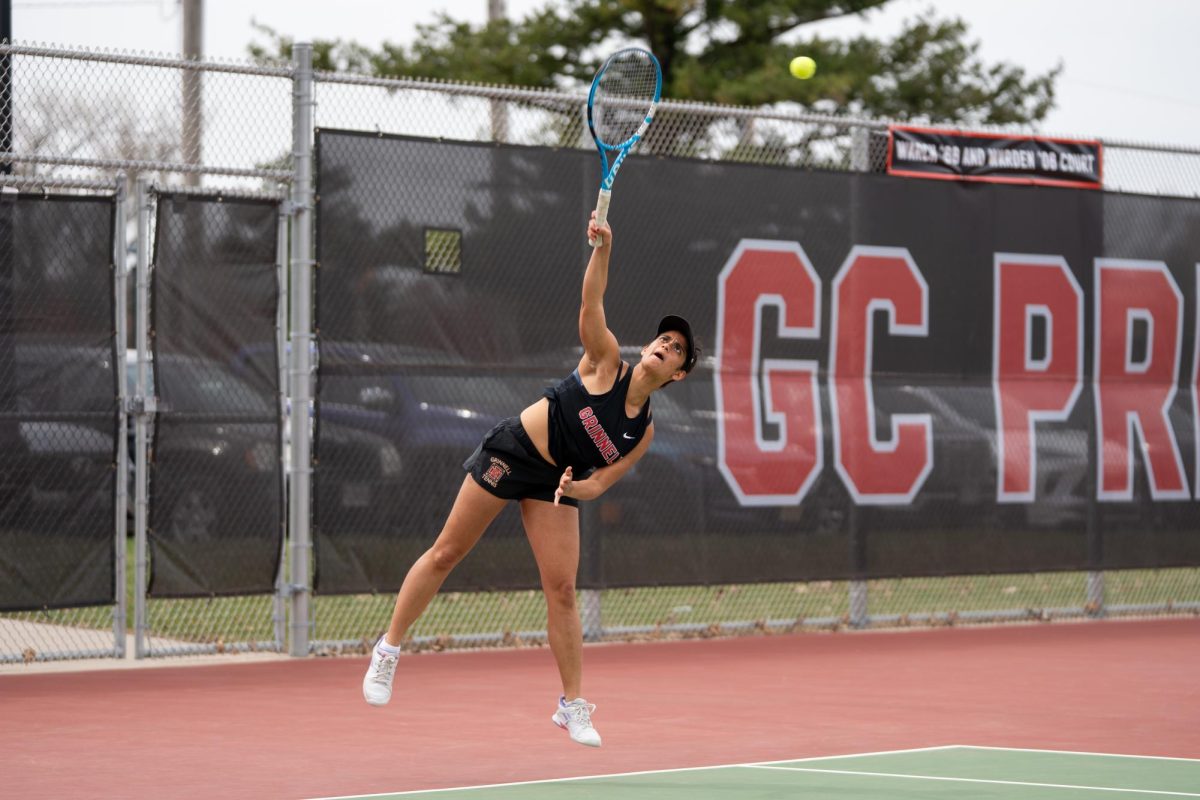When Kiyan Ng ’14 heard about the Student Organization of Latina/os (SOL) trip to Guatemala, she expected 10 days of volunteering and service work. Instead, she said, she got the opportunity to experience Guatemala, not as a tourist, but as a student.
Between Monday, Jan. 6 and Thursday, Jan. 16, Ng and eight other SOL members led by Residence Life Coordinator (RLC) Gabe Barela explored social justice efforts throughout different areas of Guatemala. They experienced firsthand the country’s struggles to cope with genocide, to come to terms with its Mayan heritage and to manage its natural resources and economic development. They met with coffee farmers, immigrants, aid workers and a Mayan spiritual leader. In short, they learned about the role of foreign aid in countries such as Guatemala, which they hope to use to educate other Grinnell students.
“We didn’t want this to be another volunteer or tourism trip,” explained Amy Flores ’15, who led the trip alongside Tanya Santiago ’14 and Barela. From the beginning, the leaders worked to embrace the educational nature of such a trip and to allow students to take the most away from this experience. Their education encompassed not just the country they visited but their roles as visitors and future activists.
The trip began in Guatemala City, where the group learned more about the country’s struggles with immigration and genocide. Two one-time immigrants to the U.S. shared with the group stories that, in Barela’s words, “brought home the humanity” in the immigration issue. Several participants spoke of their personal connections to the topic.
“My dad frequently talks about the way he migrated from Mexico to the U.S., so I knew a little bit of the struggle [immigrants face],” explained Martin Estrada ’15. “But I’m never going to be able to understand the struggle they went through.”
Another struggle and similarly unfamiliar experience they learned about was former dictator José Efraín Ríos Montt’s 1982 genocide of indigenous populations. While in Guatemala City, participants met with the Hijos por la Identidad y la Justicia contra el Olvido y el Silencio (HIJOS) organization, which uses political graffiti to bring awareness to human rights violations.
The genocide remains a sensitive subject in Guatemala. The U.S. helped uphold Montt’s regime because it was anti-communist, and Flores noted that activists still struggle for proper acknowledgement of this tragic genocide.
They also interacted with Network in Solidarity with the People of Guatemala (NISGUA), another human rights organization. NISGUA assigns international “accompaniers” to Guatemalans across the country.
“Just being seen with [the accompaniers] protects [Guatemalans] because if anything happens to them, it becomes an international incident … I wouldn’t have thought of that as making a difference,” said Cassandra Miller ’16.

Photo contributed.
From Guatemala City the group moved to Xela, Guatemala’s second largest city. After Xela, they branched out into rural areas of the country, shifting their focus from political issues to economic development and its environmental costs.
They visited Comunidad Nueva Alianza, a coffee plantation run jointly by local families.
“[It was] eye-opening to see the amount of work that goes into something we take for granted,” Barela recounted of the experience.
But the families faced challenges beyond the labor coffee-farming requires. They recounted to participants their struggle to choose between organic farming and higher yields, a struggle that split the cooperative, which now divides its production between organic and conventional farming.
“It’s not like these people aren’t aware of the consequences [of using pesticides],” Miller said. “But you do see a lot of returns economically from using the chemicals.”
The group also visited the community of La Puya, where residents were faced with global environmental issues. In La Puya, residents had been protesting incursions by an American mining company for 22 months. Participants described peacefully protesting, even when faced with tear gas assaults by police in riot gear.
Finally, students experienced firsthand the power of shared spirituality and heritage to unite Guatemalans, many who have indigenous roots. They hiked Laguna Chicabal, a crater lake and sacred Mayan site, alongside a Mayan spiritual guide. Atop the summit, they participated in a traditional ritual that lasted over an hour.
Many participants expressed surprise at connecting with the ritual on a personal level.
“Just the fact that it was spiritual land is what got me the most,” Flores said. “It was untouched … and if it was touched, it was touched respectfully.”
What Flores credits as one of the biggest takeaways from this trip was the relationships created amongst the Grinnell students who participated in it. She hopes this closeness will inform their efforts to bring the lessons they learned back to campus. The group already hopes to bring to campus products from the places they visited, such as the weaving cooperative and coffee farm.
What comes across clearest at the moment, however, is the ways the trip has inspired them personally.
“As I plan my future, I really want to find some time to go back to Guatemala or back to my home country,” Ng said. “Not to help them, but to guide them in the right direction. I guess something important that I learned is we’re not there to help, we’re not there to play the god. We’re really just their mentor, their guide.”














































Doug Cutchins • Jan 25, 2014 at 5:16 pm
I’m glad that the focus of this article is on the students’ learning, but wish that it had mentioned two important facts: that this trip would not have been possible without the generous support of thousands of dollars from the College in the form of an international co-curricular travel grant, and that alum Jenny Dale was the on-the-ground contact, organizer, and leader in Guatemala. We need to give credit where credit is due for making this trip possible and successful, and I think the student participants would join me in thanking and recognizing the College and Jenny Dale for their incredible support of this terrific experience.